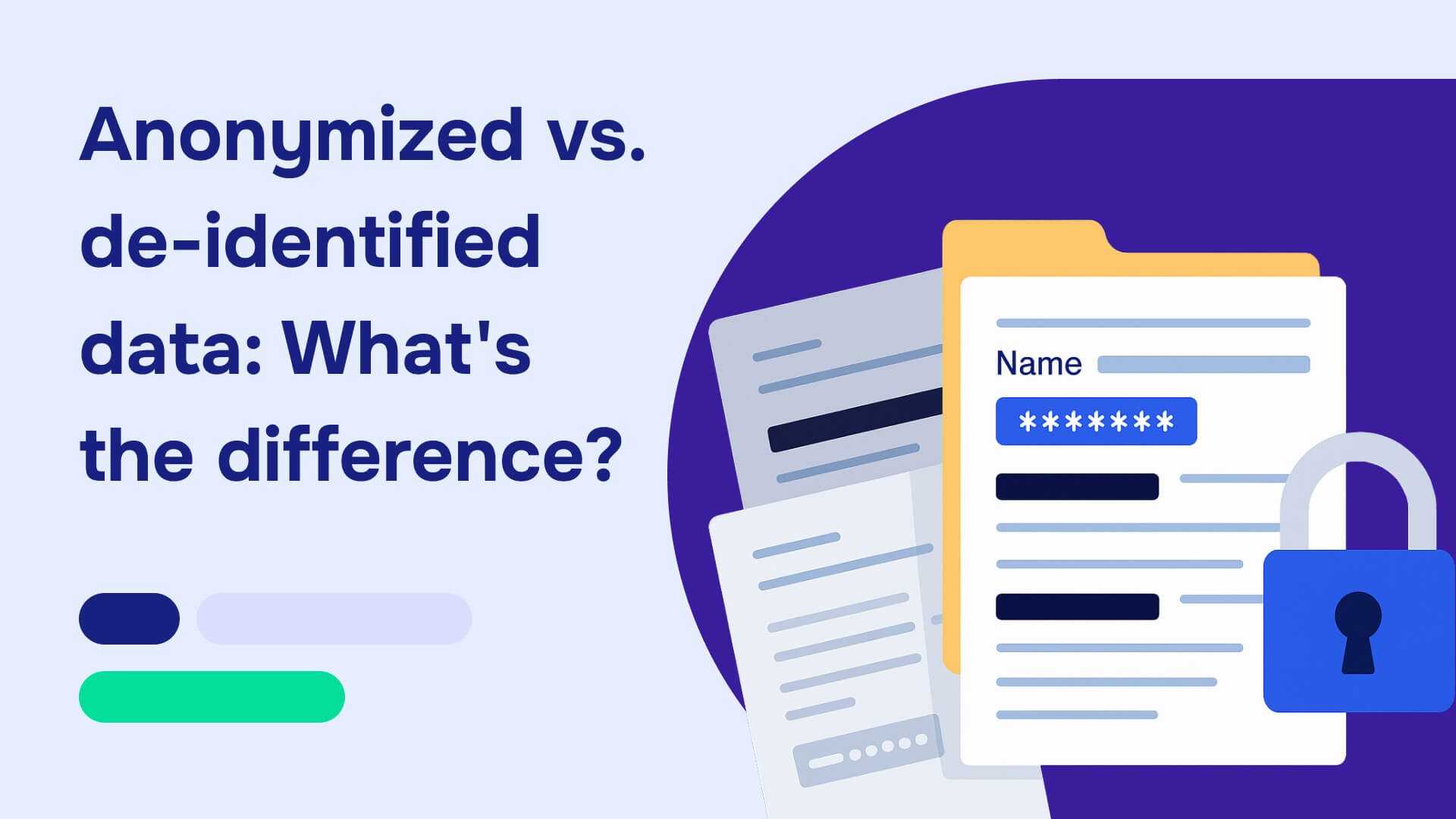Imagine this scenario: Sarah, an elderly patient with a heart condition, attempts to schedule her regular cardiologist appointment. To her shock, she's denied due to unpaid bills and insurance issues in her records. The catch? Sarah has always been diligent about paying her medical bills on time.
What Sarah experienced is a classic case of medical identity theft. Criminals have tampered with her medical data, invalidating her insurance information and adding fraudulent charges for services she has never requested or received.
This form of identity theft poses significant risks to both individuals and healthcare facilities. Patients may face service denials, insurance fraud, and privacy breaches. Meanwhile, healthcare providers could encounter regulatory violations, treatment delays, and substantial costs for record restoration and legal action.
The good news is that there are effective methods to prevent medical identity theft and safeguard confidential records. This guide will explore key strategies to protect your medical facility from identity thieves. With stolen medical identity information valued at an average of $50 per identity – compared to just $1 for a stolen Social Security number – this is a threat healthcare providers can't afford to overlook.
Read on to discover how to prevent medical identity theft in healthcare, protect your patients, and safeguard your organization.
What is medical identity theft?
Medical identity theft is a serious crime that occurs when someone wrongfully uses another person's health information for personal gain or to access medical services. This fraudulent activity can take various forms, each with its own set of consequences for both individuals and healthcare providers:
- Medical Services Fraud: This involves using someone else's identity to receive medical care, obtain prescription drugs, or undergo treatments. It not only leads to financial losses but can also result in dangerous medical record inaccuracies for the victim.
- Criminal Identity Theft: In this scenario, criminals use stolen Personal Identifiable Information (PII) from medical records to commit other crimes. This can lead to erroneous medical records and potential legal complications for the victim.
- Benefit Fraud: Thieves may use stolen identities to gain access to government health benefits like Medicare or Medicaid. This not only drains public resources but can also leave the rightful beneficiaries without access to needed services.
- Employment Fraud: Some individuals use stolen medical information to pass employment screenings or gain employment benefits. This can have far-reaching consequences for both the victim and the employer.
Medical identity theft — how can it occur?
Healthcare facilities often rely on complex, interconnected systems, typically unified by Electronic Health Record (EHR) platforms like Epic. But with such complicated setups being used by many people, protecting confidential records is challenging. Healthcare organizations face pervasive threats from various channels, each with its own set of risks. Here are the primary ways medical identity theft can occur:
- Cyberattacks or insider threats are used to gain unauthorized access to large volumes of patient records
- Example: In 2023, HCA Healthcare, the nation’s biggest hospital organization, suffered a data breach that affected up to 11 million individuals. Types of accessed data included names, addresses, dates of birth, and more.
- Phishing Scams: Fraudulent emails or messages trick employees into revealing sensitive information.
- Example: In 2017, UnityPoint Health was hit by a phishing attack, which led to the data of 16,429 individuals being compromised.
- Stolen Credentials: Theft or misuse of login information to access medical records.
- Example: In 2021, a former employee of the South Georgia Medical Center downloaded private data from the medical center’s systems to an external drive one day after quitting. Patient test results, names, and birth dates were all leaked. The former employee had legitimate access but used it for criminal ends.
- Insecure Document Disposal: Improper disposal of paper records or digital files that contain personal health information.
- Example: In January 2015, the Indiana Attorney General’s Office issued its first Health Insurance Portability and Accountability Act fine. The guilty party was Joseph Beck, a dentist who failed to securely destroy the paper records of former patients.
- Social Engineering: Manipulating staff to disclose confidential information or grant access to systems.
- Example: Five employees of a Sacramento health provider were tricked by cybercriminals into revealing their login information. The attack led to the release of thousands of private medical records.
- Medical Billing Fraud: Falsifying insurance claims or patient identities for financial gain.
- Example: Armando Valdes was sentenced to 60 months in federal prison for directing a $38 million healthcare fraud scheme based on falsified insurance claims to United Healthcare and Blue Cross Blue Shield.
How are stolen medical identities used?
Medical data is highly valuable to cybercriminals, who exploit it in various ways. Here are the primary methods criminals use stolen medical identities, along with real-world examples:
- Insurance Fraud: Criminals use stolen identities to claim benefits for procedures not covered under their own insurance.
- Example: A New York man was sentenced to 12 years in prison and ordered to pay $336 million in restitution for a years-long fraud scheme based on fraudulent insurance claims.
- Prescription Abuse: Thieves pose as victims to acquire medications that require a doctor's prescription.
- Example: A pharmacy owner and an associate were sentenced for using stolen beneficiary information to generate false prescriptions and illegally obtain prescription drugs.
- Fake Medical Services: Corrupt healthcare facilities use this information to bill for medical procedures or services that were unnecessary or never performed.
- Example: In January 2024, the head of a medical clinic was sentenced to 124 months in federal prison after being found guilty of committing healthcare fraud and aggravated identity theft. Vincenzo Rubino submitted fraudulent claims for services that were never provided.
- Obtaining Free Services: Receiving medical treatments or services under someone else's identity.
- Example: A Texas woman was sentenced to 15 years in federal prison after being found guilty of using illegally obtained personal information to make fraudulent purchases.
- Selling Personal Information: Illegally selling health information and personal identifying information (PII) to third parties or on the dark web.
- Example: The largest-ever cyberattack on the healthcare industry targeted the UnitedHealth Group. It was first reported in May of 2024. The attack was allegedly perpetrated by a group known as RansomHub. RansomHub wrote on the Dark Web that stolen data from the UnitedHealth Group subsidiary was up for sale.
What happens when medical identity theft strikes healthcare facilities?
Medical identity theft has far-reaching consequences for healthcare facilities, affecting their operations, reputation, and compliance. From patient privacy violations to trust erosion and regulatory repercussions, here are the different ways medical identity theft is a threat to healthcare organizations:
- Patient Privacy Violation: Unauthorized access to sensitive patient information can lead to privacy breaches, compromising patient trust and legal compliance. In the UnitedHealth Group breach, it’s estimated that 4Tb of data containing protected health information (PHI) and personally identifiable information (PII) on a “substantial proportion of people in America” was stolen. This means that millions of Americans may have had their medical privacy violated.
- Financial Impact: These attacks can cause significant financial losses due to fraud, litigation costs, and fines for non-compliance with regulations such as HIPAA. Sticking with the UnitedHealth Group breach, it’s worth noting that the financial impact of the leak has been estimated at $1.6 billion.
- Disruption of Services: Operations can be disrupted by the need to investigate and resolve identity theft cases, affecting patient care and service delivery. Medical identity theft can result in the alteration of important medical records and data including elements like allergen information or blood type. Resolving the case and recovering the correct information can take time, but is essential to avoid providing inappropriate or incorrect treatments.
- Trust Erosion: Institutions can lose patient trust and suffer damage to their reputation, reducing patient loyalty and potential revenue. Patients who have had their data stolen and then put up for sale on the dark web frequently feel that their trust was betrayed and are more likely to seek other facilities for services in the future.
- Regulatory Repercussions: Non-compliance with data protection regulations can lead to severe fines and increased scrutiny from regulatory bodies. In June of 2024, a Cedar Rapids emergency room doctor was caught taking medical records in violation of HIPAA. He now faces a maximum possible sentence of five years in jail and a $250,000 fine. Generally, HIPAA violations can cause fines of up to over $2 million.
- Reputational Damage: Negative publicity and loss of credibility can affect your healthcare facility's standing in the community long-term. Many of these attacks receive significant press coverage, decreasing the likelihood of potential patients to consider choosing your facility.
How to prevent medical identity theft in healthcare facilities
Modern healthcare organizations need comprehensive strategies to protect their data. Here are the main strategies you can use to protect private medical information.
Employee training
Educate staff about identity theft risks and best practices for handling sensitive information. Conduct regular workshops and update training modules. Emphasize the importance of vigilance and proper data handling to prevent potential breaches.
Secure document disposal
For paper and electronic records that are no longer needed, implement secure methods of disposal, such as shredding and secure digital wiping, to prevent unauthorized access. Regularly audit disposal processes to ensure compliance with data protection policies. However, for any documents that may need to be retrieved in future for medical, insurance, or legal reasons, redaction is the better option — see below.
Use strong authentication
Deploy multi-factor authentication (MFA) to protect access to patient records and healthcare systems, reducing the risk of unauthorized access. Ensure all staff members are trained in the use of MFA and understand its importance in securing sensitive data.
Conduct frequent audits
Conduct your own audits to identify vulnerabilities in data handling and storage practices, ensuring continuous improvement in security measures. Use audit findings to update policies and training programs, keeping them aligned with best practices.
Monitor and detect suspicious activities
Use comprehensive monitoring solutions to detect and respond to unauthorized access attempts or anomalies in data usage promptly. Implement real-time alerts and incident response plans to quickly address any potential security threats.
Implement comprehensive security policies
Develop and enforce policies covering all data protection aspects, from access controls to incident response, ensuring a holistic approach to security. Regularly review and update these policies to adapt to new threats and regulatory requirements.
Redact sensitive information
Use automated redaction tools such as Redactable to securely redact sensitive patient information, ensuring that only authorized personnel can access critical data. Taking this measure means that even if your organization suffers a hacking attack, data breach, or internal leak, the amount of sensitive information available for misuse is dramatically reduced. Regularly review redaction processes to ensure they are effective and up to date with current standards.
Why choose Redactable for preventing medical identity theft?
Medical identity theft is a major threat that can cause significant financial loss, major legal consequences, and reputational damage for healthcare organizations. Using the right tools and strategies to protect your data is a fundamental safeguarding measure. Document redaction is at the heart of information security and is a powerful solution for preventing medical identity theft.
Using Redactable’s reliable, accurate, and efficient Ai-powered redaction solution, you can remove confidential medical records from documents before they are distributed, preventing the information leaks that can lead to identity theft.
Redactable’s robust feature set includes:
- Advanced AI-Driven Redaction: Redactable's AI platform ensures thorough and accurate redaction of all occurrences of sensitive information across vast volumes of documents can be carried out in minutes.
- Easy to Use: The intuitive Redaction Wizard simplifies the redaction process, making it accessible for users of any technical ability.
- Permanent Security: Redactions cannot be reversed, providing confidence that patient data is well-protected.
- Cloud-Based Convenience: Access and redact documents securely from any browser without the need for downloads or plugins.







